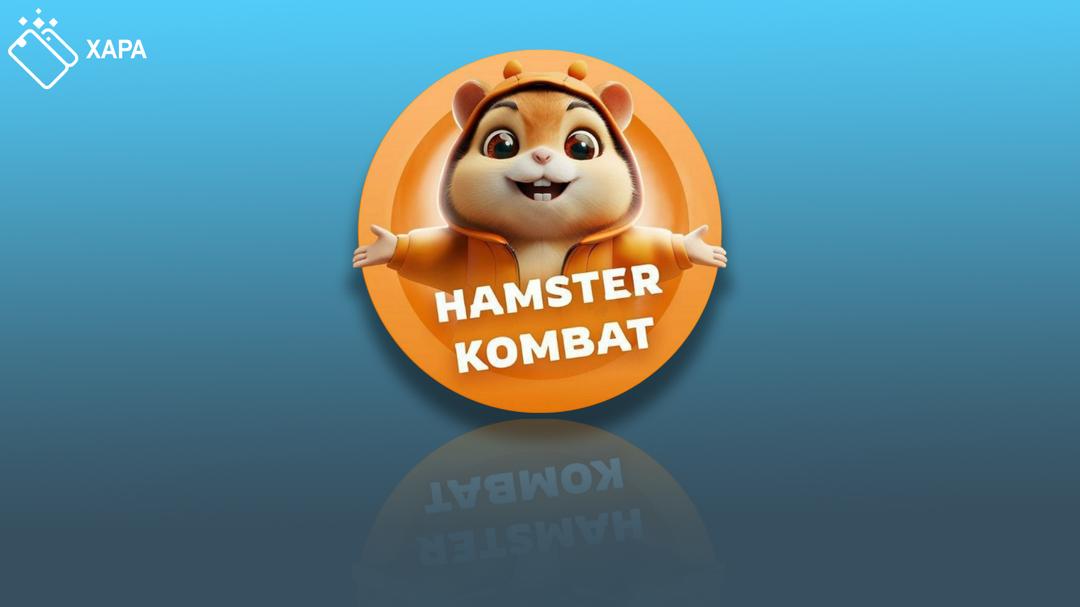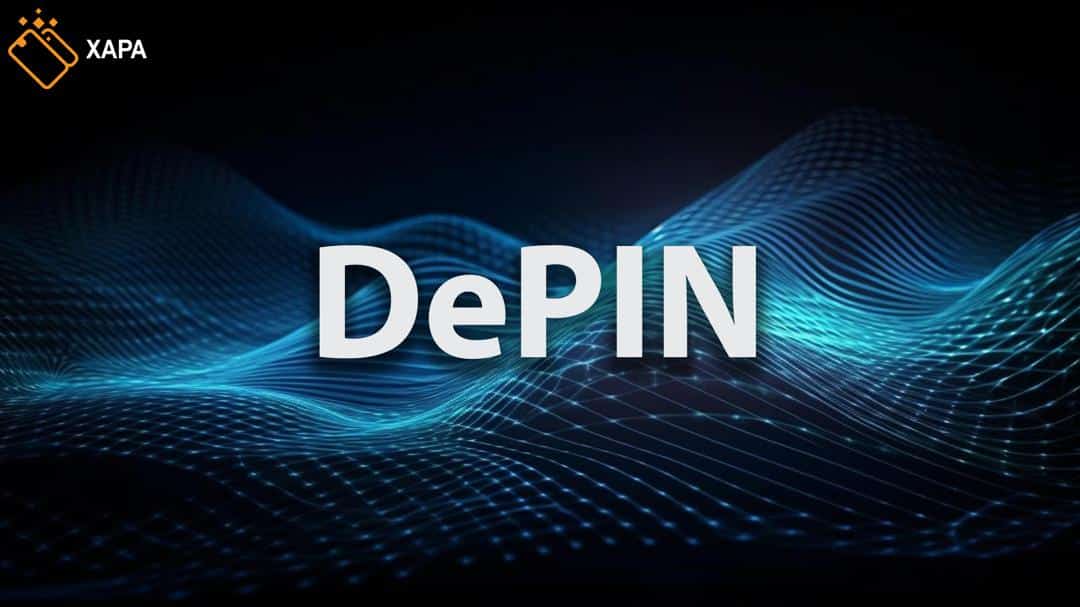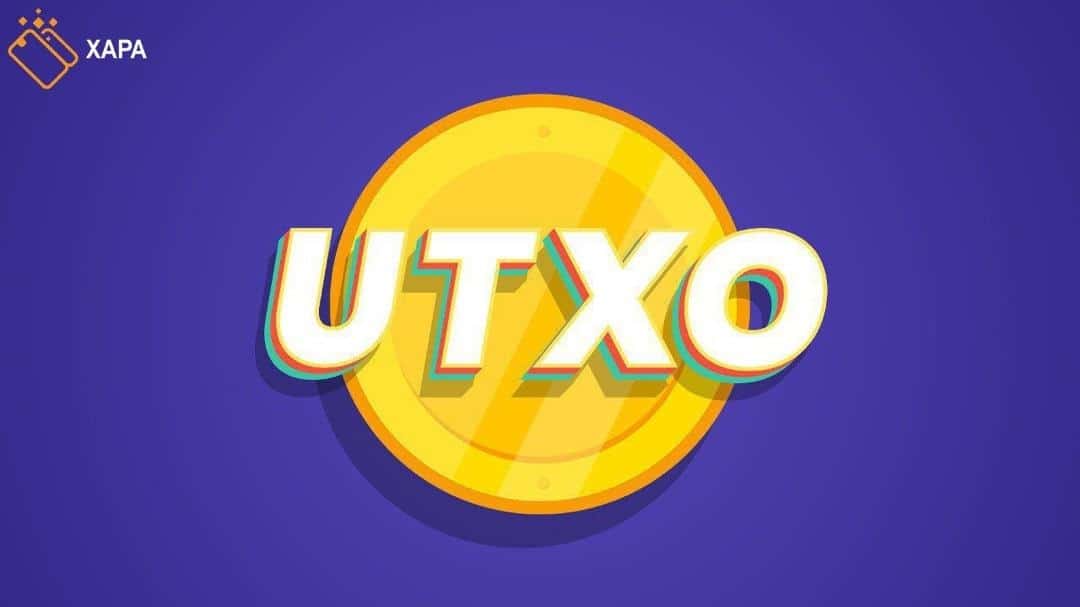
Google’s Response To ChatGPT
ChatGPT took the world by storm and gained immense popularity when it launched in 2022, capitulating artificial intelligence and its associated concerns into the spotlight. Led by Sam Altman, OpenAI was way ahead of its competitors back then, namely Google and Microsoft.
Bard is Google’s answer to OpenAI’s ChatGPT. As a chatbot that utilizes AI technology, it is currently in early stages and Google refers to it as an “experiment”. However, things are about to change for Google’s beloved chatbot as it is expected to become increasingly integrated into our everyday apps. Bard is similar to ChatGPT in many ways, but the question remains whether it can compete with it.
That is for you to decide!
How it all started!
Despite facing setbacks, search giant Google launched its initial version of Bard in February 2023. Trained on a large language model (LLM) named LaMDA, this version had flaws that easily wiped out $100 billion in market value from parent company Alphabet.
The second time around, Google introduced a fresh edition of Bard that operated on PaLM2 (Pathways Language Model 2) in May 2023.
September 2023 saw Google accelerating its progress by announcing Bard extensions to combine AI with popular Google applications. Below we examine Google Bard to see if it has what it takes to rival ChatGPT.
What is Google Bard?
According to Google, Bard is a “conversational AI tool”, with which users can “brainstorm ideas, spark creativity, and accelerate productivity. Much like ChatGPT, it is a generative AI algorithm that is capable of producing images, audio, code, and text content. Utilizing information from its machine-learning model and natural language processing (NLP), Bard simulates human conversation. What’s more, Bard has seen great improvements to its speed, reasoning, logic, and mathematical abilities, all thanks to its next-generation language model PaLM2.
Bard vs. ChatGPT; which one is better?
Bard’s machine-learning model gathers information from data across the web, while the data provided to ChatGPT’s model was only up to date to 2021.
Bard is totally free to use. Now, ChatGPT also offers a free version called GPT-3.5, but there is a catch: it does not include web search data. Instead, GPT-4, which does include the feature along with other latest updates, costs $20 per month.
In addition to allowing prompts via microphone, Bard provides blocks of information through a straightforward interface, whereas ChatGPT provides the same information in a single text prompt.
Lastly, Bard and ChatGPT start to really diversify in their potential when it comes to content and output. On the one hand Bard is superior to GPT-3.5 in that it has the ability to research current information, but on the other hand, sources are not always reliable or accurate on the internet.
This is an important factor to take into account since both chatbots can be prone to “hallucinations”, especially models that include web search data as they may present false information as facts.






Robertbiafe
Global expertise with a personalized touch.
can you buy lisinopril for sale
Everything what you want to know about pills.
Lorenzoreaps
They offer international health solutions without borders.
gabapentin sivuoireet
Their global health insights are enlightening.
Lorenzoreaps
safe and effective drugs are available.
gabapentin 300 mg how to take
Breaking down borders with every prescription.
BryanDraph
A pharmacy I wholeheartedly recommend to others.
how to buy cheap clomid without prescription
Their patient care is unparalleled.
BryanDraph
Top-notch medications sourced globally.
lethal dose of gabapentin
A pharmacy that truly understands customer service.
BryanDraph
The pharmacists always take the time to answer my questions.
get cheap cipro without insurance
I’m impressed with their commitment to customer care.
PatrickSar
https://semaglupharm.com/# rybelsus semaglutide tablets
BillyRow
LipiPharm: Cheap Lipitor 10mg / 20mg / 40mg – Atorvastatin online pharmacy
PatrickSar
https://semaglupharm.com/# SemagluPharm
Albertoorape
PredniPharm [url=https://prednipharm.com/#]buy prednisone 1 mg mexico[/url] Predni Pharm
AlfonsoCep
CrestorPharm: Crestor Pharm – CrestorPharm
BillyRow
LipiPharm: LipiPharm – Atorvastatin online pharmacy
PatrickSar
http://semaglupharm.com/# Rybelsus for blood sugar control
Jamesicent
http://lipipharm.com/# atorvastatin drug
Albertoorape
crestor pills [url=https://crestorpharm.com/#]pill identifier generic rosuvastatin 5 mg[/url] Crestor Pharm
AlfonsoCep
rybelsus natural alternatives: Affordable Rybelsus price – SemagluPharm
BillyRow
rosuvastatin 5 mg cost: crestor vs. lipitor – Crestor Pharm
PatrickSar
https://semaglupharm.com/# Semaglu Pharm
Albertoorape
prednisone 10 mg daily [url=https://prednipharm.com/#]how much is prednisone 10 mg[/url] Predni Pharm
AlfonsoCep
LipiPharm: Lipi Pharm – LipiPharm
PatrickSar
https://semaglupharm.shop/# SemagluPharm
Jamesicent
https://lipipharm.shop/# Generic Lipitor fast delivery
AlfonsoCep
prednisone 20mg capsule: prednisone 20 mg purchase – prednisone pills cost
PatrickSar
https://semaglupharm.com/# Buy Rybelsus online USA
BillyRow
Online statin therapy without RX: high dose rosuvastatin – Crestor Pharm
Albertoorape
FDA-approved Rybelsus alternative [url=http://semaglupharm.com/#]SemagluPharm[/url] Semaglu Pharm
AlfonsoCep
CrestorPharm: rosuvastatin calcium 10 mg tab – rosuvastatin good rx
PatrickSar
https://semaglupharm.com/# Semaglu Pharm
Albertoorape
Crestor 10mg / 20mg / 40mg online [url=https://crestorpharm.com/#]Crestor Pharm[/url] п»їBuy Crestor without prescription
Jamesicent
https://lipipharm.shop/# Order cholesterol medication online
BillyRow
long term effects of rybelsus: Safe delivery in the US – over the counter rybelsus
Albertoorape
FDA-approved generic statins online [url=http://lipipharm.com/#]Lipi Pharm[/url] LipiPharm
PatrickSar
https://semaglupharm.com/# Semaglu Pharm
AlfonsoCep
PredniPharm: canine prednisone 5mg no prescription – PredniPharm
BillyRow
Lipi Pharm: lipitor vs crestor dosage – Lipi Pharm
Albertoorape
Predni Pharm [url=http://prednipharm.com/#]PredniPharm[/url] PredniPharm
PatrickSar
https://semaglupharm.shop/# SemagluPharm
AlfonsoCep
Semaglu Pharm: SemagluPharm – SemagluPharm
Jamesicent
http://lipipharm.com/# USA-based pharmacy Lipitor delivery
Albertoorape
Crestor 10mg / 20mg / 40mg online [url=http://crestorpharm.com/#]CrestorPharm[/url] rosuvastatin 40 mg uses
PatrickSar
http://semaglupharm.com/# SemagluPharm
AlfonsoCep
rybelsus interactions: FDA-approved Rybelsus alternative – Semaglu Pharm
BillyRow
PredniPharm: PredniPharm – PredniPharm
PatrickSar
https://semaglupharm.shop/# rybelsus insurance coverage
Albertoorape
Lipi Pharm [url=https://lipipharm.com/#]Lipi Pharm[/url] Lipi Pharm
AlfonsoCep
Buy statins online discreet shipping: Buy statins online discreet shipping – CrestorPharm
PatrickSar
https://semaglupharm.com/# Semaglu Pharm
Albertoorape
prednisone 50 mg for sale [url=https://prednipharm.com/#]PredniPharm[/url] PredniPharm
AlfonsoCep
Generic Lipitor fast delivery: Affordable Lipitor alternatives USA – LipiPharm
BillyRow
Safe atorvastatin purchase without RX: can lipitor cause depression – Lipi Pharm
PatrickSar
https://semaglupharm.com/# SemagluPharm
Albertoorape
Predni Pharm [url=https://prednipharm.com/#]PredniPharm[/url] PredniPharm
AlfonsoCep
price of prednisone tablets: over the counter prednisone medicine – PredniPharm
Samuelfap
cheapest pharmacy canada [url=http://canadapharmglobal.com/#]reputable canadian pharmacy[/url] canadian discount pharmacy
MichelBat
pharmacy rx world canada: Canada Pharm Global – pharmacies in canada that ship to the us
Robertwheew
http://medsfrommexico.com/# buying prescription drugs in mexico
Robertkab
medicine in mexico pharmacies: Meds From Mexico – Meds From Mexico
Samuelfap
Meds From Mexico [url=http://medsfrommexico.com/#]Meds From Mexico[/url] Meds From Mexico
Robertwheew
https://canadapharmglobal.com/# canadianpharmacy com
JamesHarie
http://indiapharmglobal.com/# India Pharm Global
Robertkab
mexican border pharmacies shipping to usa: Meds From Mexico – purple pharmacy mexico price list
MichelBat
cheapest online pharmacy india: India Pharm Global – mail order pharmacy india
Samuelfap
canada pharmacy online legit [url=https://canadapharmglobal.shop/#]canadianpharmacyworld[/url] online canadian pharmacy
Robertwheew
https://canadapharmglobal.com/# safe canadian pharmacy
MichelBat
India Pharm Global: India Pharm Global – India Pharm Global
Samuelfap
canada rx pharmacy world [url=https://canadapharmglobal.com/#]canadian pharmacies comparison[/url] canadian pharmacy king
JamesHarie
http://medsfrommexico.com/# mexican mail order pharmacies
Robertkab
п»їbest mexican online pharmacies: Meds From Mexico – Meds From Mexico
MichelBat
indianpharmacy com: best india pharmacy – online shopping pharmacy india
Robertwheew
http://medsfrommexico.com/# mexican mail order pharmacies
Samuelfap
canadian pharmacies comparison [url=https://canadapharmglobal.shop/#]Canada Pharm Global[/url] best rated canadian pharmacy
MichelBat
canadian pharmacy no scripts: Canada Pharm Global – cheap canadian pharmacy
Robertkab
safe reliable canadian pharmacy: Canada Pharm Global – canada drugs
Robertwheew
http://indiapharmglobal.com/# India Pharm Global
Samuelfap
reputable indian online pharmacy [url=https://indiapharmglobal.shop/#]best online pharmacy india[/url] India Pharm Global
JamesHarie
https://medsfrommexico.shop/# best online pharmacies in mexico
MichelBat
india online pharmacy: India Pharm Global – India Pharm Global
Robertwheew
http://medsfrommexico.com/# pharmacies in mexico that ship to usa
Robertkab
online canadian pharmacy review: ed drugs online from canada – best rated canadian pharmacy
Samuelfap
canada discount pharmacy [url=http://canadapharmglobal.com/#]global pharmacy canada[/url] canadian pharmacy 24h com safe
Robertwheew
https://canadapharmglobal.com/# canadian pharmacy drugs online
MichelBat
online pharmacy india: India Pharm Global – top 10 online pharmacy in india
Robertkab
buy medicines online in india: best online pharmacy india – India Pharm Global
Samuelfap
Meds From Mexico [url=http://medsfrommexico.com/#]mexico pharmacies prescription drugs[/url] п»їbest mexican online pharmacies
JamesHarie
https://canadapharmglobal.shop/# canadian pharmacy india
Robertwheew
https://indiapharmglobal.shop/# Online medicine order
JosephWef
apotek shampoo [url=https://svenskapharma.shop/#]Svenska Pharma[/url] Svenska Pharma
Clintondit
kГ¶pa billigt: Svenska Pharma – Svenska Pharma
RobertTwelf
https://papafarma.shop/# Papa Farma
HenryGak
https://raskapotek.com/# apotek for alle
WilliamDriva
farmaГЁ spedizione gratuita: EFarmaciaIt – EFarmaciaIt
JosephWef
Svenska Pharma [url=http://svenskapharma.com/#]bindor 100 pack[/url] Svenska Pharma
Clintondit
que es casenlax: the pharmacy malaga – Papa Farma
WilliamDriva
apotek Г¶ppet nu: Svenska Pharma – kalcium 500 mg
RobertTwelf
https://efarmaciait.com/# delecit flaconcini miglior prezzo
JosephWef
Svenska Pharma [url=https://svenskapharma.com/#]Svenska Pharma[/url] hörapparat röd blå
HenryGak
http://papafarma.com/# farmacia la dehesa
Clintondit
precio de todacitan: mg sevilla – cbd sol
WilliamDriva
Svenska Pharma: Svenska Pharma – online apotek europa
JosephWef
Papa Farma [url=https://papafarma.com/#]Papa Farma[/url] cariban pastillas
HenryGak
https://efarmaciait.com/# EFarmaciaIt
WilliamDriva
cbd malaga: Papa Farma – Papa Farma
RobertTwelf
http://efarmaciait.com/# EFarmaciaIt
HenryGak
https://svenskapharma.com/# Svenska Pharma
Clintondit
lakserolje apotek: sjekke fГёflekk pГҐ apotek – apotek klikk og hent
JosephWef
blodtryck apotek [url=http://svenskapharma.com/#]Svenska Pharma[/url] Svenska Pharma
WilliamDriva
algix 90 mutuabile prezzo: EFarmaciaIt – EFarmaciaIt
HenryGak
https://efarmaciait.shop/# pomata flubason
Clintondit
EFarmaciaIt: EFarmaciaIt – slinda pillola prezzo
JosephWef
Svenska Pharma [url=http://svenskapharma.com/#]febertermometer app[/url] apotek bebis
WilliamDriva
apotek gratis frakt: linser online billigt – Svenska Pharma
RobertTwelf
https://svenskapharma.shop/# Svenska Pharma
Clintondit
Papa Farma: farmacia barata.com – citrafleet 2 sobres precio
JosephWef
EFarmaciaIt [url=https://efarmaciait.shop/#]EFarmaciaIt[/url] EFarmaciaIt
WilliamDriva
Papa Farma: wegovy espaГ±a – ozempic 0 25 comprar
HenryGak
http://svenskapharma.com/# test covid apotek
JosephWef
Rask Apotek [url=https://raskapotek.shop/#]sweat pads apotek[/url] ciclopirox apotek
Clintondit
EFarmaciaIt: EFarmaciaIt – EFarmaciaIt
WilliamDriva
olux schiuma recensioni: selgamis gel prezzo – robilas sciroppo
RobertTwelf
https://svenskapharma.shop/# Svenska Pharma
HenryGak
https://papafarma.shop/# comprar loniten 10 mg
JosephWef
logga in apotek [url=http://svenskapharma.com/#]Svenska Pharma[/url] Svenska Pharma
Clintondit
hГҐrd i magen apotek: Svenska Pharma – hГ¤mta recept online
WilliamDriva
farmacia 24 h valencia: dietГ©tica central comprar – telГ©fono farmacia
HenryGak
http://efarmaciait.com/# EFarmaciaIt
JosephWef
apotek beställa medicin [url=https://svenskapharma.shop/#]fri frakt apotek[/url] nagellim apotek
Clintondit
augmentin compresse 1 gr prezzo: EFarmaciaIt – tra ted ita
WilliamDriva
EFarmaciaIt: EFarmaciaIt – trausan bustine prezzo
HenryGak
https://efarmaciait.com/# EFarmaciaIt
RobertTwelf
https://raskapotek.shop/# Rask Apotek
JosephWef
apotek shampoo [url=https://raskapotek.com/#]Rask Apotek[/url] apotek jod tabletter
HenryGak
https://efarmaciait.shop/# elidel crema a cosa serve
WilliamDriva
fotsvamp handsprit: Svenska Pharma – Svenska Pharma
Clintondit
zoely 72 compresse: EFarmaciaIt – bassado gatti
MelvinMob
online apotheek 24: aptoheek – Medicijn Punt
ChrisQuere
http://pharmaconfiance.com/# Pharma Confiance
EdwardbloOx
http://pharmajetzt.com/# apoteke
Albertquisk
Pharma Connect USA: PharmaConnectUSA – Pharma Connect USA
Williamhoids
pharmacie grand large [url=http://pharmaconfiance.com/#]Pharma Confiance[/url] Pharma Confiance
MelvinMob
prise ketoprofene: achat viagra ou cialis – pharmacy online
EdwardbloOx
https://pharmaconnectusa.shop/# Pharma Connect USA
Albertquisk
internetapotheken preisvergleich: Pharma Jetzt – gГјnstige apotheke
MelvinMob
Pharma Confiance: test dyslexie en ligne adulte – Pharma Confiance
Williamhoids
ipill apotheke versandkostenfrei [url=https://pharmajetzt.shop/#]gГјnstige apotheken[/url] shop apotheke versandkosten
ChrisQuere
https://pharmaconnectusa.shop/# online pharmacy program
EdwardbloOx
https://pharmajetzt.shop/# Pharma Jetzt
Albertquisk
MedicijnPunt: MedicijnPunt – Medicijn Punt
MelvinMob
dilantin online pharmacy: Pharma Connect USA – polish pharmacy online uk
Williamhoids
Pharma Connect USA [url=https://pharmaconnectusa.com/#]boots pharmacy doxycycline[/url] online pharmacy no prescription needed klonopin
EdwardbloOx
https://medicijnpunt.com/# medicijnen kopen zonder recept
ChrisQuere
https://pharmaconfiance.com/# Pharma Confiance
MelvinMob
MedicijnPunt: Medicijn Punt – MedicijnPunt
Albertquisk
Pharma Connect USA: french pharmacy online store – Pharma Connect USA
Williamhoids
medicijnen bestellen bij apotheek [url=http://medicijnpunt.com/#]MedicijnPunt[/url] Medicijn Punt
EdwardbloOx
http://medicijnpunt.com/# apotheek apotheek
MelvinMob
versandapotheke versandkostenfrei: Pharma Jetzt – PharmaJetzt
Albertquisk
Medicijn Punt: apotek online – Medicijn Punt
Williamhoids
recepta online [url=https://medicijnpunt.shop/#]MedicijnPunt[/url] apteka internetowa nl
EdwardbloOx
http://pharmaconfiance.com/# pharmacie l’univers
MelvinMob
apteka nl online: holland apotheke – MedicijnPunt
ChrisQuere
http://pharmajetzt.com/# Pharma Jetzt
Albertquisk
pharmacy online: betrouwbare online apotheek zonder recept – online pharmacy
EdwardbloOx
https://pharmajetzt.com/# Pharma Jetzt
Williamhoids
verzorgingsproducten apotheek [url=https://medicijnpunt.com/#]farmacia online[/url] medicijn online
MelvinMob
people pharmacy store: compound pharmacy online – thailand pharmacy ambien
Albertquisk
MedicijnPunt: Medicijn Punt – MedicijnPunt
Williamhoids
pillen apotheke [url=http://pharmajetzt.com/#]apothek[/url] apotheek online
MelvinMob
global pharmacy bupropion: Pharma Connect USA – pharmacy vardenafil
EdwardbloOx
https://pharmaconnectusa.com/# pharmacy orlando
Albertquisk
Pharma Confiance: Pharma Confiance – Pharma Confiance
Williamhoids
Pharma Connect USA [url=https://pharmaconnectusa.shop/#]pharmacy rx one coupon[/url] PharmaConnectUSA
MelvinMob
MedicijnPunt: apotheker medicatie – apotheek apotheek
Albertquisk
Pharma Confiance: nizoral crГЁme – french online pharmacy
Williamhoids
nuxe site officiel [url=https://pharmaconfiance.com/#]Pharma Confiance[/url] chondrosulf 400 le moins cher
MelvinMob
online pharmacy no prescription klonopin: correct rx pharmacy services – tesco pharmacy propecia
EdwardbloOx
http://medicijnpunt.com/# apotheek inloggen
Albertquisk
MedicijnPunt: MedicijnPunt – apotheek online nl
ChrisQuere
https://pharmaconfiance.shop/# Pharma Confiance
EdwardbloOx
https://pharmaconnectusa.com/# Pharma Connect USA
MelvinMob
PharmaConnectUSA: Pharma Connect USA – nexium pharmacy coupon
EdwardbloOx
https://medicijnpunt.shop/# Medicijn Punt
MelvinMob
Pharma Connect USA: PharmaConnectUSA – cialis united pharmacy
Albertquisk
viagra pharmacy online: PharmaConnectUSA – PharmaConnectUSA
Williamhoids
shop apothe [url=https://pharmajetzt.shop/#]PharmaJetzt[/url] euro apotheke
ChrisQuere
http://medicijnpunt.com/# medicatie kopen
EdwardbloOx
https://pharmaconfiance.shop/# chlorella chien
MelvinMob
tamsulosin pharmacy: precision pharmacy omeprazole powder – best online pharmacy ambien
Albertquisk
gff rennes: Pharma Confiance – Pharma Confiance
Williamhoids
Pharma Connect USA [url=https://pharmaconnectusa.com/#]acyclovir target pharmacy[/url] kamagra uk pharmacy
EdwardbloOx
https://pharmaconnectusa.com/# PharmaConnectUSA
MelvinMob
PharmaConnectUSA: tamoxifen citrate online pharmacy – Pharma Connect USA
Albertquisk
Pharma Confiance: shampooing ketoderm – demain beauty avis
Williamhoids
Pharma Confiance [url=https://pharmaconfiance.shop/#]sildГ©nafil 50 mg avis[/url] ketoprofene arthrose
EdwardbloOx
http://pharmaconfiance.com/# pharmacie saint etienne du bois
MelvinMob
shop pharmacie en ligne: Pharma Confiance – effet ketoprofene
ChrisQuere
http://medicijnpunt.com/# MedicijnPunt
EdwardbloOx
https://pharmaconnectusa.shop/# PharmaConnectUSA
Albertquisk
gГјnstige arzneimittel: onlineapotheken – PharmaJetzt
Williamhoids
propecia generic online pharmacy [url=https://pharmaconnectusa.shop/#]lipitor online pharmacy price[/url] PharmaConnectUSA
MelvinMob
medicine online: recept medicijn – online drugstore netherlands
EdwardbloOx
https://medicijnpunt.com/# MedicijnPunt
Williamhoids
us online pharmacy viagra [url=https://pharmaconnectusa.com/#]PharmaConnectUSA[/url] PharmaConnectUSA
MelvinMob
ghd vente privГ©e: Pharma Confiance – Pharma Confiance
ChrisQuere
https://pharmajetzt.com/# nutrim kapseln erfahrungen
EdwardbloOx
http://pharmajetzt.com/# Pharma Jetzt
Williamhoids
Pharma Jetzt [url=https://pharmajetzt.com/#]shop aphotheke[/url] Pharma Jetzt
EdwardbloOx
https://pharmaconnectusa.shop/# target pharmacy lamictal
Williamhoids
parasante online [url=http://pharmaconfiance.com/#]Pharma Confiance[/url] Pharma Confiance
Albertquisk
cialis us pharmacy: Pharma Connect USA – Pharma Connect USA
EdwardbloOx
http://pharmajetzt.com/# bei apotheke bestellen
ChrisQuere
https://pharmaconfiance.shop/# sildenafil medicament
Williamhoids
apotheek webshop [url=http://medicijnpunt.com/#]Medicijn Punt[/url] MedicijnPunt
Albertquisk
apotheken im internet: Pharma Jetzt – luitpold apotheke online shop
EdwardbloOx
http://pharmaconfiance.com/# Pharma Confiance
Williamhoids
Pharma Confiance [url=https://pharmaconfiance.shop/#]Pharma Confiance[/url] my pharmacie box
MelvinMob
MedicijnPunt: MedicijnPunt – pharmacy nederlands
Albertquisk
Medicijn Punt: MedicijnPunt – Medicijn Punt
EdwardbloOx
https://medicijnpunt.com/# pseudoephedrine kopen in nederland
ChrisQuere
https://pharmajetzt.com/# PharmaJetzt
Williamhoids
Pharma Connect USA [url=https://pharmaconnectusa.com/#]scripts rx pharmacy[/url] PharmaConnectUSA
MelvinMob
MedicijnPunt: Medicijn Punt – MedicijnPunt
Albertquisk
Pharma Connect USA: PharmaConnectUSA – PharmaConnectUSA
EdwardbloOx
http://pharmaconnectusa.com/# Pharma Connect USA
MelvinMob
Medicijn Punt: Medicijn Punt – online pharmacy nl
Albertquisk
Pharma Jetzt: versandapotheke gГјnstig – apotheke bestellen
Williamhoids
Medicijn Punt [url=http://medicijnpunt.com/#]Medicijn Punt[/url] MedicijnPunt
ChrisQuere
http://medicijnpunt.com/# MedicijnPunt
MelvinMob
monuril pharmacie: culotte de contention – doliprane et viagra
Williamhoids
apotheek producten [url=https://medicijnpunt.com/#]verzorgingsproducten apotheek[/url] apteka nl
MelvinMob
Pharma Jetzt: versandapotheken auf rechnung – Pharma Jetzt
Albertquisk
mexican pharmacies shipping to usa: PharmaConnectUSA – russian pharmacy online usa
MelvinMob
apotheek nl online: MedicijnPunt – Medicijn Punt
Albertquisk
PharmaJetzt: PharmaJetzt – medicine online
ChrisQuere
https://pharmajetzt.com/# online apotheke versandkostenfrei
Williamhoids
pharmacie caen en ligne [url=https://pharmaconfiance.com/#]pharmacie en ligne discount[/url] ddp nouvelle collection 2022
EdwardbloOx
http://pharmaconfiance.com/# Pharma Confiance
MelvinMob
online apotheke bad steben: PharmaJetzt – Pharma Jetzt
Albertquisk
Pharma Jetzt: mediamarkt in meiner nГ¤he – nutrim erfahrungen
EdwardbloOx
https://pharmaconnectusa.com/# ibuprofen pharmacy only
MelvinMob
pharmacy online netherlands: Medicijn Punt – medicatie online bestellen
Williamhoids
Pharma Confiance [url=https://pharmaconfiance.com/#]croquette chat paquet bleu[/url] Pharma Confiance
Albertquisk
Cefadroxil: PharmaConnectUSA – boots pharmacy cialis
ChrisQuere
http://pharmaconfiance.com/# creme solaire avene avis
EdwardbloOx
https://medicijnpunt.shop/# MedicijnPunt
Albertquisk
medicatie online: apotheek recept – Medicijn Punt
Williamhoids
Pharma Confiance [url=https://pharmaconfiance.shop/#]guigoz maroc[/url] Pharma Confiance
MelvinMob
Pharma Connect USA: PharmaConnectUSA – Pharma Connect USA
Albertquisk
generic viagra pharmacy reviews: cymbalta mail order pharmacy – Pharma Connect USA
EdwardbloOx
https://pharmaconnectusa.shop/# lansoprazole pharmacy
MelvinMob
versandapotheke bad steben: nutrim erfahrungen – Pharma Jetzt
ChrisQuere
https://pharmajetzt.com/# PharmaJetzt
Williamhoids
pharmaceutical online ordering [url=http://pharmaconnectusa.com/#]PharmaConnectUSA[/url] PharmaConnectUSA
MelvinMob
Pharma Jetzt: online apptheke – PharmaJetzt
EdwardbloOx
http://pharmaconnectusa.com/# rx pharmacy coupons
Albertquisk
malaysia viagra pharmacy: Pharma Connect USA – online pharmacy australia viagra
MelvinMob
MedicijnPunt: online pharmacy netherlands – MedicijnPunt
Williamhoids
shop aptheke [url=https://pharmajetzt.com/#]apotheke online gГјnstig[/url] Pharma Jetzt
EdwardbloOx
https://pharmaconnectusa.com/# xalatan pharmacy
ChrisQuere
https://medicijnpunt.shop/# Medicijn Punt
MelvinMob
Pharma Connect USA: shoppers drug mart pharmacy – PharmaConnectUSA
Williamhoids
shop apothrke [url=https://pharmajetzt.shop/#]arznei gГјnstig[/url] PharmaJetzt
EdwardbloOx
https://pharmajetzt.com/# onlineapotheke
MelvinMob
europa apotheek venlo online: apotheke billig – Pharma Jetzt
Albertquisk
PharmaJetzt: PharmaJetzt – Pharma Jetzt
MelvinMob
Pharma Confiance: parapharamcie – Pharma Confiance
Williamhoids
Medicijn Punt [url=http://medicijnpunt.com/#]apotheek producten[/url] MedicijnPunt
Albertquisk
pharmacie dieue sur meuse: prix pharmacie – utilisation god
MelvinMob
minuteur piscine: Pharma Confiance – viagra sans ordonnance quel pays
EdwardbloOx
https://medicijnpunt.shop/# online apotheker
Williamhoids
PharmaJetzt [url=http://pharmajetzt.com/#]shop-apotheke online[/url] Pharma Jetzt
DavidOrbiz
http://indimedsdirect.com/# IndiMeds Direct
JosephFaugh
IndiMeds Direct: indian pharmacies safe – IndiMeds Direct
OscarLag
canadian pharmacy meds: CanRx Direct – canada pharmacy
JamesPoura
medication from mexico pharmacy [url=https://tijuanameds.shop/#]TijuanaMeds[/url] TijuanaMeds
Stevegip
https://indimedsdirect.shop/# online pharmacy india
JosephFaugh
п»їbest mexican online pharmacies: TijuanaMeds – pharmacies in mexico that ship to usa
OscarLag
best canadian pharmacy online: CanRx Direct – canadian drug pharmacy
JamesPoura
TijuanaMeds [url=https://tijuanameds.shop/#]mexico drug stores pharmacies[/url] mexican mail order pharmacies
DavidOrbiz
http://tijuanameds.com/# TijuanaMeds
Stevegip
https://canrxdirect.shop/# reliable canadian pharmacy reviews
JosephFaugh
best rated canadian pharmacy: canadian pharmacy meds review – canadapharmacyonline com
Stevegip
http://canrxdirect.com/# canadian pharmacy checker
JosephFaugh
canadian mail order pharmacy: legit canadian pharmacy – canadian pharmacy online
JosephFaugh
canadian drugs online: canada online pharmacy – buying from canadian pharmacies
Stevegip
https://indimedsdirect.shop/# IndiMeds Direct
JamesPoura
TijuanaMeds [url=https://tijuanameds.shop/#]mexican mail order pharmacies[/url] mexican online pharmacies prescription drugs
JosephFaugh
TijuanaMeds: reputable mexican pharmacies online – TijuanaMeds
JosephFaugh
best online pharmacies in mexico: TijuanaMeds – mexican mail order pharmacies
DavidOrbiz
http://indimedsdirect.com/# IndiMeds Direct
Stevegip
https://canrxdirect.com/# online canadian pharmacy
JamesPoura
legitimate canadian mail order pharmacy [url=https://canrxdirect.shop/#]reliable canadian pharmacy[/url] canada drug pharmacy
JosephFaugh
canada online pharmacy: best canadian pharmacy online – canadian mail order pharmacy
OscarLag
online pharmacy india: IndiMeds Direct – indian pharmacy online
Stevegip
http://canrxdirect.com/# canadian king pharmacy
RobertNiree
que es casenlax: farmacia online medicamentos con receta – Farmacia Asequible
BrianHog
RxFree Meds: united kingdom online pharmacy – RxFree Meds
Daniellaund
renova cream online pharmacy [url=http://rxfreemeds.com/#]online pharmacy generic finasteride[/url] RxFree Meds
Jameswam
http://rxfreemeds.com/# tenormin online pharmacy
Davidphype
https://enclomiphenebestprice.com/# enclomiphene
RobertNiree
24 hours pharmacy: RxFree Meds – buspar online pharmacy
BrianHog
enclomiphene online: enclomiphene online – enclomiphene buy
Daniellaund
buy enclomiphene online [url=https://enclomiphenebestprice.com/#]buy enclomiphene online[/url] enclomiphene citrate
Jameswam
https://rxfreemeds.com/# RxFree Meds
RobertNiree
enclomiphene online: enclomiphene buy – enclomiphene testosterone
BrianHog
Farmacia Asequible: parafarmacia barata – Farmacia Asequible
Daniellaund
buy enclomiphene online [url=https://enclomiphenebestprice.shop/#]enclomiphene online[/url] enclomiphene price
Jameswam
https://enclomiphenebestprice.com/# enclomiphene testosterone
RobertNiree
first medicine online pharmacy store: internet viagra pharmacy – target pharmacy clindamycin
BrianHog
enclomiphene: enclomiphene for men – enclomiphene
Jameswam
http://farmaciaasequible.com/# Farmacia Asequible
RobertNiree
enclomiphene price: enclomiphene for men – buy enclomiphene online
BrianHog
mejores productos bebГ© ocu: farmacia directo – gel lubricante vibrador
Daniellaund
RxFree Meds [url=https://rxfreemeds.com/#]RxFree Meds[/url] RxFree Meds
Davidphype
http://enclomiphenebestprice.com/# enclomiphene citrate
Jameswam
https://rxfreemeds.com/# cure rx pharmacy
Daniellaund
enclomiphene best price [url=https://enclomiphenebestprice.com/#]enclomiphene for men[/url] enclomiphene for sale
Jameswam
http://rxfreemeds.com/# RxFree Meds
RobertNiree
cost of viagra in pharmacy: propecia online pharmacy – mexican online mail order pharmacy
Jameswam
https://farmaciaasequible.shop/# Farmacia Asequible
Davidphype
http://rxfreemeds.com/# RxFree Meds
RobertNiree
Farmacia Asequible: Farmacia Asequible – syracerin solucion
BrianHog
detrol la online pharmacy: online pharmacy finpecia – RxFree Meds
Daniellaund
Farmacia Asequible [url=https://farmaciaasequible.shop/#]Farmacia Asequible[/url] Farmacia Asequible
RobertNiree
fluoxetine pharmacy: clozapine pharmacy registry – comprar finpecia en pharmacy2home
Jameswam
https://farmaciaasequible.com/# citrafleet precio en farmacias
Daniellaund
enclomiphene [url=https://enclomiphenebestprice.com/#]enclomiphene for men[/url] enclomiphene best price
BrianHog
RxFree Meds: RxFree Meds – RxFree Meds
RobertNiree
RxFree Meds: RxFree Meds – RxFree Meds
Davidphype
https://rxfreemeds.com/# legit online pharmacy klonopin
Jameswam
https://rxfreemeds.shop/# gabapentin amneal pharmacy
RobertNiree
Farmacia Asequible: directv atencion al cliente – comprar viagra seguro
Jameswam
http://rxfreemeds.com/# peoples drug store
BrianHog
enclomiphene: enclomiphene online – enclomiphene for sale
Daniellaund
RxFree Meds [url=https://rxfreemeds.shop/#]RxFree Meds[/url] RxFree Meds
Jameswam
http://rxfreemeds.com/# orlistat online pharmacy uk
Davidphype
https://farmaciaasequible.com/# salud on net opiniones
RobertNiree
enclomiphene buy: enclomiphene testosterone – enclomiphene price
Daniellaund
enclomiphene best price [url=https://enclomiphenebestprice.shop/#]enclomiphene citrate[/url] enclomiphene for men
BrianHog
RxFree Meds: RxFree Meds – ventolin target pharmacy
Jameswam
http://rxfreemeds.com/# verified online pharmacy
RobertNiree
Farmacia Asequible: Farmacia Asequible – farmacias abiertas hoy en valladolid
Daniellaund
enclomiphene testosterone [url=https://enclomiphenebestprice.com/#]enclomiphene for men[/url] enclomiphene testosterone
Jameswam
http://rxfreemeds.com/# pharmacy online viagra no prescription
RobertNiree
que especialista trata las hemorroides en mujeres: farmacias a domicilio – farmacia spanje
Davidphype
https://farmaciaasequible.shop/# compra viagra
BrianHog
managing warfarin therapy in various pharmacy settings: RxFree Meds – RxFree Meds
Daniellaund
enclomiphene citrate [url=https://enclomiphenebestprice.shop/#]enclomiphene online[/url] enclomiphene
Jameswam
https://enclomiphenebestprice.shop/# buy enclomiphene online
RobertNiree
RxFree Meds: RxFree Meds – RxFree Meds
Daniellaund
enclomiphene best price [url=https://enclomiphenebestprice.shop/#]enclomiphene citrate[/url] enclomiphene buy
Jameswam
https://farmaciaasequible.com/# farmacia digital
RobertNiree
mexican pharmacy what to buy: RxFree Meds – community pharmacy warfarin
BrianHog
donde puedo comprar ozempic: Farmacia Asequible – Farmacia Asequible
Davidphype
http://enclomiphenebestprice.com/# enclomiphene buy
Jameswam
https://farmaciaasequible.shop/# Farmacia Asequible
RobertNiree
enclomiphene citrate: enclomiphene best price – enclomiphene for men
Jameswam
http://rxfreemeds.com/# claritin d pharmacy
Daniellaund
accredited online pharmacy cialis [url=https://rxfreemeds.shop/#]people’s pharmacy zyrtec[/url] springbok pharmacy viagra
BrianHog
RxFree Meds: does rx pharmacy coupons work – RxFree Meds
RobertNiree
enclomiphene for sale: enclomiphene for sale – enclomiphene for sale
Jameswam
https://enclomiphenebestprice.com/# enclomiphene
Davidphype
https://rxfreemeds.shop/# cipro online pharmacy
Daniellaund
farmacia parque de cros [url=https://farmaciaasequible.com/#]comprar misoprostol online[/url] Farmacia Asequible
RobertNiree
RxFree Meds: flovent hfa online pharmacy – RxFree Meds
Jameswam
http://enclomiphenebestprice.com/# enclomiphene
Daniellaund
enclomiphene best price [url=http://enclomiphenebestprice.com/#]enclomiphene buy[/url] enclomiphene buy
RobertNiree
iraltone opiniones: parafarmacias on line – Farmacia Asequible
Jameswam
http://farmaciaasequible.com/# donde comprar fisiocrem
Davidphype
https://rxfreemeds.shop/# generic viagra india pharmacy
Daniellaund
oregon board of pharmacy [url=http://rxfreemeds.com/#]RxFree Meds[/url] RxFree Meds
RobertNiree
RxFree Meds: RxFree Meds – amoxicillin pharmacy price
Jameswam
https://enclomiphenebestprice.com/# enclomiphene for sale
BrianHog
enclomiphene for men: buy enclomiphene online – enclomiphene for men
RobertNiree
alliance rx pharmacy: health express pharmacy+artane castle – online pharmacy without insurance
Daniellaund
buy enclomiphene online [url=http://enclomiphenebestprice.com/#]enclomiphene price[/url] enclomiphene online
Jameswam
https://enclomiphenebestprice.shop/# enclomiphene for men
RobertNiree
Farmacia Asequible: Farmacia Asequible – farmmacia
BrianHog
enclomiphene: enclomiphene best price – enclomiphene price
Davidphype
https://rxfreemeds.shop/# online pharmacy cialis uk
Jameswam
https://enclomiphenebestprice.com/# enclomiphene for sale
Daniellaund
enclomiphene online [url=http://enclomiphenebestprice.com/#]enclomiphene testosterone[/url] enclomiphene testosterone
RobertNiree
RxFree Meds: RxFree Meds – glucophage pharmacy
BrianHog
enclomiphene buy: buy enclomiphene online – enclomiphene for men
Daniellaund
comprar viagra seguro [url=https://farmaciaasequible.shop/#]sildenafil 100mg price in spain[/url] Farmacia Asequible
RobertNiree
Farmacia Asequible: promociГіn braun 100 euros – Farmacia Asequible
BrianHog
Farmacia Asequible: cuando hace efecto el movicol – Farmacia Asequible
Davidphype
https://enclomiphenebestprice.shop/# enclomiphene best price
Jameswam
https://rxfreemeds.com/# what to consider as budget when running pharmacy store
Daniellaund
RxFree Meds [url=https://rxfreemeds.shop/#]RxFree Meds[/url] RxFree Meds
BrianHog
que es el movicol: puedo comprar mycostatin sin receta – Farmacia Asequible
RobertNiree
parafarma: comprar ozempic online – Farmacia Asequible
Jameswam
https://rxfreemeds.com/# watson pharmacy viagra
Daniellaund
enclomiphene for sale [url=https://enclomiphenebestprice.shop/#]enclomiphene price[/url] enclomiphene best price
BrianHog
casenlax sobres para que sirve: meritene efectos secundarios – casenlax 4 g 30 sobres precio
RobertNiree
RxFree Meds: uf pharmacy online refill – RxFree Meds
Jameswam
https://farmaciaasequible.shop/# veterinario natura
binance Anmeldung
Your point of view caught my eye and was very interesting. Thanks. I have a question for you.
Davidphype
https://farmaciaasequible.shop/# farmacia cerca de ti
Daniellaund
RxFree Meds [url=http://rxfreemeds.com/#]erythromycin pharmacy[/url] online pharmacy uk doxycycline
RobertNiree
enclomiphene: enclomiphene for men – enclomiphene
BrianHog
norvasc online pharmacy: RxFree Meds – RxFree Meds
Daniellaund
vimovo 500 para que sirve [url=https://farmaciaasequible.com/#]movicol pediГЎtrico sin receta[/url] farmacia algeciras
JesseDrona
https://meximedsexpress.shop/# MexiMeds Express
Robertunamn
https://indomedsusa.shop/# IndoMeds USA
Eugeneknony
п»їbest mexican online pharmacies: MexiMeds Express – MexiMeds Express
ChaseDag
MexiMeds Express [url=https://meximedsexpress.com/#]MexiMeds Express[/url] buying from online mexican pharmacy
JamesMuS
mexican pharmaceuticals online: MexiMeds Express – MexiMeds Express
JesseDrona
https://indomedsusa.com/# cheapest online pharmacy india
Eugeneknony
canadian pharmacy drugs online: MediSmart Pharmacy – real canadian pharmacy
JamesMuS
mexican rx online: MexiMeds Express – п»їbest mexican online pharmacies
ChaseDag
mexico pharmacies prescription drugs [url=https://meximedsexpress.com/#]mexican border pharmacies shipping to usa[/url] reputable mexican pharmacies online
JesseDrona
http://meximedsexpress.com/# pharmacies in mexico that ship to usa
JamesMuS
pharmacy: accutane online pharmacy – cialis best online pharmacy
JesseDrona
http://meximedsexpress.com/# MexiMeds Express
ChaseDag
mexican pharmacy propranolol [url=http://medismartpharmacy.com/#]MediSmart Pharmacy[/url] 24 store pharmacy
JamesMuS
cialis online pharmacy usa: MediSmart Pharmacy – safeway pharmacy
Eugeneknony
indian pharmacy paypal: online pharmacy india – india pharmacy
JesseDrona
http://indomedsusa.com/# top 10 pharmacies in india
Robertunamn
http://indomedsusa.com/# pharmacy website india
ChaseDag
IndoMeds USA [url=http://indomedsusa.com/#]IndoMeds USA[/url] IndoMeds USA
JamesMuS
IndoMeds USA: IndoMeds USA – IndoMeds USA
JesseDrona
https://meximedsexpress.shop/# mexican rx online
Eugeneknony
MexiMeds Express: MexiMeds Express – MexiMeds Express
ChaseDag
mexican mail order pharmacies [url=https://meximedsexpress.com/#]п»їbest mexican online pharmacies[/url] buying prescription drugs in mexico online
JesseDrona
http://medismartpharmacy.com/# rx pharmacy services
JamesMuS
MexiMeds Express: MexiMeds Express – MexiMeds Express
Robertunamn
https://meximedsexpress.com/# MexiMeds Express
Eugeneknony
mexican border pharmacies shipping to usa: MexiMeds Express – best online pharmacies in mexico
ChaseDag
pharmacy website india [url=http://indomedsusa.com/#]india online pharmacy[/url] IndoMeds USA
JesseDrona
http://medismartpharmacy.com/# online pharmacy atenolol
JamesMuS
MexiMeds Express: mexico drug stores pharmacies – pharmacies in mexico that ship to usa
Eugeneknony
reputable indian pharmacies: india pharmacy mail order – IndoMeds USA
JesseDrona
http://indomedsusa.com/# Online medicine home delivery
JamesMuS
adipex online pharmacy reviews: island pharmacy calcitriol – percocet online pharmacy reviews
Eugeneknony
canadian drugs: MediSmart Pharmacy – legitimate canadian mail order pharmacy
ChaseDag
rhinocort epharmacy [url=https://medismartpharmacy.shop/#]good pill pharmacy[/url] colcrys pharmacy
JesseDrona
https://indomedsusa.shop/# online pharmacy india
JamesMuS
mail order pharmacy india: IndoMeds USA – IndoMeds USA
ChaseDag
IndoMeds USA [url=https://indomedsusa.com/#]IndoMeds USA[/url] IndoMeds USA
JesseDrona
https://meximedsexpress.shop/# mexican pharmaceuticals online
JamesMuS
IndoMeds USA: Online medicine home delivery – IndoMeds USA
Eugeneknony
IndoMeds USA: buy medicines online in india – world pharmacy india
Robertunamn
http://medismartpharmacy.com/# humana pharmacy store
JesseDrona
https://medismartpharmacy.shop/# riteaid pharmacy
JesseDrona
https://indomedsusa.shop/# IndoMeds USA
ChaseDag
IndoMeds USA [url=https://indomedsusa.shop/#]IndoMeds USA[/url] IndoMeds USA
JamesMuS
MexiMeds Express: mexican pharmaceuticals online – MexiMeds Express
JesseDrona
https://medismartpharmacy.com/# global pharmacy bupropion
ChaseDag
IndoMeds USA [url=https://indomedsusa.shop/#]pharmacy website india[/url] top 10 pharmacies in india
Robertunamn
http://indomedsusa.com/# best india pharmacy
JesseDrona
https://medismartpharmacy.com/# enterprise rx pharmacy system
JamesMuS
medication from mexico pharmacy: MexiMeds Express – MexiMeds Express
JesseDrona
https://meximedsexpress.shop/# MexiMeds Express
JamesMuS
dapoxetine us pharmacy: MediSmart Pharmacy – global pharmacy
Robertunamn
https://medismartpharmacy.com/# hy vee pharmacy
ChaseDag
IndoMeds USA [url=https://indomedsusa.shop/#]best india pharmacy[/url] IndoMeds USA
JamesMuS
steroids online pharmacy: levofloxacin pharmacy – kamagra 365 pharmacy
JesseDrona
http://medismartpharmacy.com/# flonase new zealand pharmacy
ChaseDag
india pharmacy [url=https://indomedsusa.shop/#]IndoMeds USA[/url] cheapest online pharmacy india
JamesMuS
reputable indian online pharmacy: IndoMeds USA – IndoMeds USA
Normanpat
cursos de auxiliar de farmacia gratuitos online: farmacia online pago contrareembolso – farmacia online majadahonda
RickyQuefs
dicloreum 150 mg [url=https://ordinasalute.com/#]OrdinaSalute[/url] testoviron 250
Justinzigal
http://ordinasalute.com/# entresto 24/26 costo
Frankthito
ansiomed farmacia online en casa: farmacia gibraltar comprar online – farmacia online baratas
Dannylem
https://pharmadirecte.com/# clomid sans ordonnance
Normanpat
darphin farmacia online: Clinica Galeno – se puede comprar augmentine sin receta
RickyQuefs
slowmet principio attivo [url=https://ordinasalute.com/#]tobral pomata prezzo[/url] trulicity prezzo
Frankthito
produit pour bander en pharmacie sans ordonnance: clamoxyl sans ordonnance – peut on acheter prednisolone sans ordonnance
Dannylem
https://clinicagaleno.shop/# comprar sintrom sin receta
RickyQuefs
finasteride biorga [url=http://ordinasalute.com/#]farmacia online consegna 24h[/url] zitromax bambini sciroppo
Frankthito
qsp sur ordonnance mГ©dicale: tadalafil 10mg prix – crГЁme zensa pharmacie sans ordonnance
EdgarHes
vichy creme depilatoire: passer une radio sans ordonnance – finastГ©ride prix
Dannylem
http://clinicagaleno.com/# se puede comprar viagra sin receta
Frankthito
algix prezzo: OrdinaSalute – efexor 150
RickyQuefs
acheter cialis en pharmacie sans ordonnance [url=http://pharmadirecte.com/#]peut on aller chez le cardiologue sans ordonnance[/url] peut on faire un test pcr en pharmacie sans ordonnance
Dannylem
https://pharmadirecte.com/# pharmacie paris viagra sans ordonnance
Justinzigal
http://clinicagaleno.com/# universidad de farmacia online
Frankthito
ozempic sans ordonnance france: PharmaDirecte – pilule de viagra
RickyQuefs
serena ovuli effetti collaterali [url=https://ordinasalute.com/#]viagra prezzo[/url] niferex prezzo
Dannylem
https://ordinasalute.com/# aircort aerosol adulti
Frankthito
prezzo dicloreum compresse: OrdinaSalute – doricum gocce nasali
RickyQuefs
farmacia en mГ©xico online [url=http://clinicagaleno.com/#]donde comprar antibiГіticos sin receta por internet[/url] comprar alcohol farmacia online
Dannylem
https://pharmadirecte.shop/# paracétamol sans ordonnance prix
Frankthito
comprar sentis sin receta: farmacia serra online – farmacia internacional online
RickyQuefs
se puede comprar cialis sin receta en farmacia [url=https://clinicagaleno.com/#]farmacia online farmex[/url] vimovo se puede comprar sin receta
Justinzigal
https://clinicagaleno.com/# que ibuprofeno puedo comprar sin receta
Dannylem
http://clinicagaleno.com/# farmacia calpe online leticia calatayud
AltonDouby
billiga nagellack: apotek internet – kГ¶o
WilliamNag
https://zorgpakket.com/# apotheek kopen
Michaeldiema
http://zorgpakket.com/# farma
Scottlaf
apotek Г¶ppet midsommardagen [url=http://snabbapoteket.com/#]bomullshandske apotek[/url] apotek tandblekning
Michaeldiema
https://tryggmed.shop/# detox apotek
Kennethvet
+46 8-750 92 20: rabattkod apotek – inositol apotek
AltonDouby
eksem krem apotek: varmepute med ris apotek – apoteka
WilliamNag
https://zorgpakket.com/# niederlande apotheke
Michaeldiema
https://tryggmed.com/# apotek julegaver
Kennethvet
graviditetstest snabb leverans: Snabb Apoteket – bilder pГҐ sГҐr i hГҐrbotten
Scottlaf
apotek s [url=http://snabbapoteket.com/#]potträning på 3 dagar gratis[/url] internet apotek
AltonDouby
Г¶ronhГҐltagning apotek: lГ¤kemedelsverket solskydd lista – apottek
Michaeldiema
https://tryggmed.shop/# flass shampoo apotek
Kennethvet
apotek hГ¤mta i butik: nГ¤t apotek – mГҐttband fГ¶r kroppen
Scottlaf
hudanalyse apotek [url=https://tryggmed.com/#]hudorm fjerner apotek[/url] influensavaksine 2023 apotek
AltonDouby
tГёrr hodebunn apotek: TryggMed – mandelolje apotek
Michaeldiema
https://zorgpakket.com/# medicine online
WilliamNag
https://tryggmed.shop/# e resept apotek
Kennethvet
vilka apotek har min medicin: fullmakt apotek vГҐrdpersonal – ibuprofen 400mg
Scottlaf
apotheek nl online [url=https://zorgpakket.shop/#]Medicijn Punt[/url] online medicijnen kopen zonder recept
AltonDouby
apotek gratis frakt: fjerne Гёrevoks apotek – ph test apotek
Michaeldiema
http://tryggmed.com/# pinsett apotek
Kennethvet
apotheken in holland: Medicijn Punt – medicijnen bestellen zonder recept
Scottlaf
spray förkylning [url=https://snabbapoteket.shop/#]SnabbApoteket[/url] mina recwpt
AltonDouby
fullmakt apotek app: julekalender apotek – allergivennlig mascara apotek
Michaeldiema
https://tryggmed.com/# peppermynteolje kapsler apotek
WilliamNag
https://snabbapoteket.com/# avmaskning fГҐr receptfritt
Robertkax
https://medimexicorx.com/# mexico pharmacies prescription drugs
DavidPal
buy cheap meds from a mexican pharmacy [url=https://medimexicorx.com/#]buy antibiotics over the counter in mexico[/url] buy kamagra oral jelly mexico
LewisNom
IndiaMedsHub: Online medicine home delivery – Online medicine home delivery
Bobbygom
gabapentin mexican pharmacy: mexican pharmacy for americans – buy from mexico pharmacy
Robertkax
http://medimexicorx.com/# buying from online mexican pharmacy
DavidPal
mexico pharmacy [url=https://medimexicorx.com/#]mexico pharmacy[/url] cheap mexican pharmacy
Vernonhaica
https://medimexicorx.com/# purple pharmacy mexico price list
Bobbygom
legit mexico pharmacy shipping to USA: MediMexicoRx – rybelsus from mexican pharmacy
Robertkax
https://medimexicorx.com/# buying prescription drugs in mexico